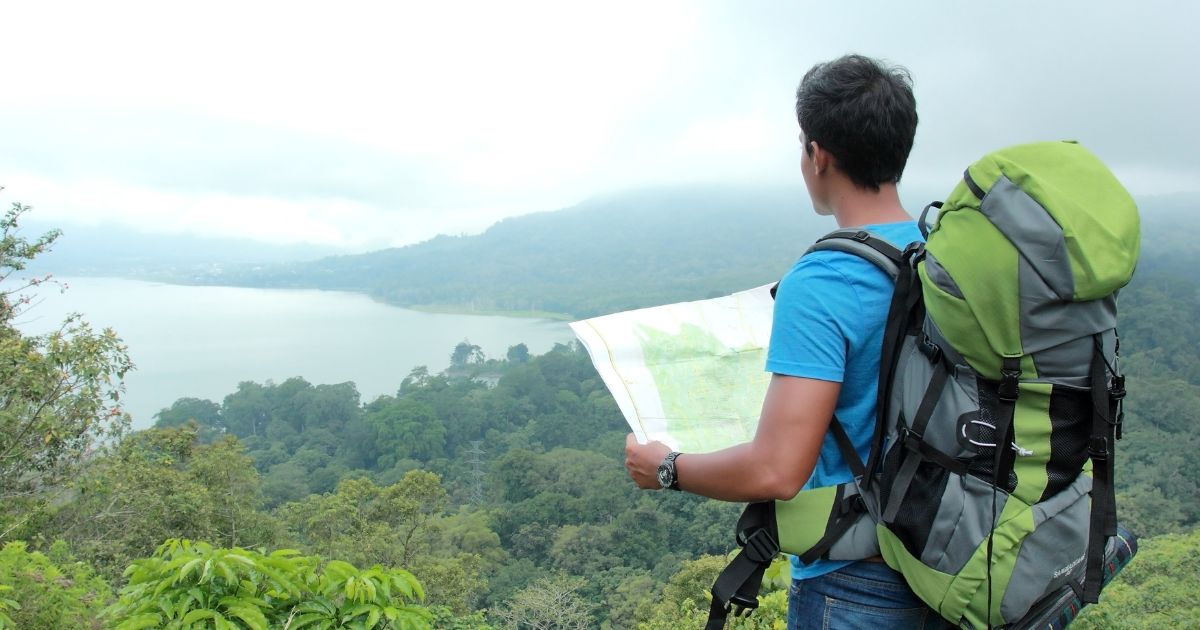Planning your next adventure but feeling overwhelmed by endless possibilities? You’re not alone. With hundreds of countries and thousands of cities to explore, selecting the right travel destination can feel more stressful than exciting. The good news is that finding your perfect travel spot doesn’t have to be a guessing game.
Choosing the right tourist destination is the foundation of any memorable trip. It affects everything from your budget and activities to the memories you’ll create. Whether you’re dreaming of tropical beaches, bustling cities, or mountain adventures, the key lies in matching your destination to your personal preferences, circumstances, and goals.
This comprehensive guide will walk you through a systematic approach to destination selection, helping you narrow down options and make confident decisions. By the end, you’ll have a clear framework for holiday planning that takes the stress out of choosing where to go next.
Start with Your Travel Goals

Before browsing Instagram-worthy photos or reading travel blogs, take a step back and consider what you want to achieve from your trip. Your travel goals will serve as your North Star throughout the decision-making process.
Define Your Purpose
Ask yourself what type of experience you’re seeking. Are you looking to relax and recharge after a stressful period? Do you want to immerse yourself in a new culture and learn something new? Perhaps you’re seeking adventure and adrenaline-pumping activities, or maybe you want to strengthen relationships with travel companions.
Some travelers prioritize personal growth and stepping outside their comfort zone, while others prefer familiar comforts with a change of scenery. There’s no right or wrong answer—only what feels authentic to your current needs and desires.
Consider Your Travel Style
Your natural preferences will significantly influence which destinations will satisfy you most. Luxury seekers might gravitate toward five-star resorts in the Maldives, while backpackers might find their travel inspiration in Southeast Asian hostels and street food markets.
Think about whether you prefer structure or spontaneity. Some destinations lend themselves well to detailed itineraries and advance bookings, while others are perfect for wandering and discovering hidden gems. Urban explorers might thrive in cities like Tokyo or New York, while nature lovers might find their bliss in New Zealand’s wilderness or Costa Rica’s national parks.
Assess Your Practical Constraints
While dreaming big is important, practical considerations will ultimately shape your destination choice. Being honest about these limitations from the start will save you disappointment later and help you focus on realistic options.
Budget Considerations
Your budget affects every aspect of your trip, from transportation and accommodation to daily expenses and activities. Instead of picking a destination first and trying to make the finances work, establish your total travel budget early in the process.
Remember that your money will stretch differently depending on where you go. A week in Switzerland might cost the same as a month in Vietnam. Consider not just the obvious expenses like flights and hotels, but also meals, transportation, activities, shopping, and emergency funds.
Research the general cost of living in potential destinations. Some of the best travel destinations for budget-conscious travelers include parts of Eastern Europe, Central America, and Southeast Asia, while Western European capitals and remote islands tend to be more expensive.
Time Limitations
The length of your trip dramatically affects which destinations make sense. A long weekend might be perfect for exploring a nearby city, but it wouldn’t allow you to fully experience a far-flung destination after accounting for travel time and jet lag.
Consider how much time you’ll spend in transit versus at your destination. Flying halfway around the world for a four-day trip rarely makes sense, while a two-week vacation might justify more extensive travel. Think about whether you prefer to see multiple places during one trip or dive deep into a single location.
Visa and Documentation Requirements
Some destinations require extensive advance planning for visas, while others allow spontaneous visits. Research entry requirements early, as some visa processes can take weeks or even months. Consider whether you’re willing to invest time and money in visa applications, or if you prefer the flexibility of visa-free or visa-on-arrival destinations.
Don’t forget about passport validity requirements—many countries require your passport to be valid for at least six months beyond your planned departure date.
Factor in Timing and Seasonality
When you travel can be just as important as where you go. The same destination can offer completely different experiences depending on the season, and timing can significantly impact both cost and enjoyment.
Weather and Climate
Consider what weather conditions you enjoy and can tolerate. Beach destinations during the monsoon season or ski resorts in summer might not provide the experience you’re seeking. Research the climate patterns of potential destinations during your available travel dates.
Keep in mind that seasons are reversed in the Southern Hemisphere, so December might be summer in Australia or South Africa. Some destinations have distinct wet and dry seasons that affect accessibility to certain areas or activities.
Peak vs. Off-Season Travel
Traveling during peak season means better weather and full availability of activities, but also higher prices and larger crowds. Off-season travel can offer significant savings and a more authentic local experience, but some attractions might be closed and the weather less predictable.
Shoulder seasons—the periods between peak and off-season—often provide the best balance of good weather, reasonable prices, and manageable crowds. Research the specific shoulder seasons for destinations on your list.
Local Events and Holidays
Major festivals, holidays, or events can either enhance your experience or create challenges. Visiting during local celebrations can provide incredible cultural insights and memorable experiences, but popular events might also mean higher prices and crowded conditions.
Conversely, arriving during major local holidays when businesses close might limit your options. Research significant events in potential destinations to decide whether you want to experience them or avoid the associated crowds and costs.
Research and Evaluate Options

Once you’ve clarified your goals and constraints, it’s time to research specific destinations. This phase requires balancing inspiration with practical investigation.
Gather Information from Multiple Sources
Start with reputable travel guides, both online and in print, to get comprehensive overviews of potential destinations. Government travel advisories provide crucial safety information, while travel blogs and forums offer personal experiences and practical tips.
Social media can provide travel inspiration and visual glimpses of destinations, but remember that posts often showcase highlights rather than complete experiences. Balance aspirational content with realistic assessments of what daily travel life would look like in each location.
Safety and Political Stability
Your safety should always be a primary consideration when choosing a destination. Check current government travel advisories for security concerns, political instability, crime rates, and health risks. Consider your own risk tolerance and travel experience when evaluating safety information.
Remember that media coverage doesn’t always reflect the reality on the ground—some destinations might seem dangerous due to news coverage, while being perfectly safe for tourists in practice. Conversely, some places might seem safe but have localized risks that affect travelers.
Infrastructure and Accessibility
Consider the level of tourism infrastructure in potential destinations. Well-developed tourist areas offer convenience and predictability, while more remote locations might provide authenticity but require more planning and flexibility.
Think about your comfort level with language barriers, different food systems, varying accommodation standards, and transportation challenges. These factors aren’t necessarily negative—they can add to the adventure—but they should align with your current travel goals and experience level.
Match Destinations to Your Interests
The best trips happen when your destination aligns with your personal interests and hobbies. Think beyond typical tourist attractions to consider how you could pursue your passions while traveling.
Activity-Based Selection
If you’re passionate about specific activities, let those guide your destination choice. Surfing enthusiasts might gravitate toward Hawaii, Portugal, or Australia. Art lovers might find themselves drawn to Paris, Florence, or Mexico City. Food enthusiasts might put Japan, Peru, or Italy at the top of their bucket list trips.
Consider destinations that offer opportunities to learn new skills or deepen existing interests. Cooking classes in Thailand, photography workshops in Iceland, or yoga retreats in India can add meaningful elements to your travel experience.
Cultural Interests
Think about what aspects of culture fascinate you most. History buffs might find their travel inspiration in Egypt, Greece, or Cambodia. Music lovers might be drawn to Vienna, Nashville, or Cuba. Architecture enthusiasts might prioritize cities like Barcelona, Istanbul, or Chicago.
Consider how much cultural difference you’re seeking. Some travelers thrive on encountering completely different ways of life, while others prefer destinations that offer cultural interest within a familiar framework.
Create Your Decision Matrix
After researching multiple options, organize your findings to make an objective comparison. Creating a simple scoring system can help you move beyond endless circular thinking to actual decision-making.
Prioritize Your Criteria
List the factors most important to you—budget, activities, weather, culture, safety, or convenience. Assign weights to each criterion based on your personal priorities. Budget might be your top concern, or perhaps cultural experiences matter most to you.
Score each potential destination on your priority criteria using a consistent scale. This systematic approach helps ensure you’re comparing destinations fairly rather than being swayed by the most recent article you read or photo you saw.
Trust Your Instincts
While logical analysis is valuable, don’t ignore your emotional response to different destinations. Sometimes a place simply calls to you, even if you can’t articulate exactly why. Equally important, if you feel consistently unenthusiastic about a destination that looks good on paper, trust that instinct too.
Pay attention to which destinations make you feel excited when you imagine yourself there. Travel should inspire anticipation and joy, not just check boxes on a list.
Making Your Final Choice
After thorough research and consideration, you’ll likely have narrowed your options to a few strong contenders. Making the final decision requires balancing all your research with practical next steps.
Consider Flexibility
Build some flexibility into your choice when possible. Booking refundable accommodations or flights with reasonable change policies can provide peace of mind. This flexibility allows you to adapt if circumstances change or if you discover new information about your chosen destination.
Consider whether your chosen destination offers backup options. Cities with varied neighborhoods provide alternatives if one area doesn’t meet your expectations. Countries with diverse regions allow you to adjust your plans while maintaining the same base logistics. Additionally, understanding travel logistics, like carry-on vs. checked baggage, can help you make smarter choices for your trip and avoid last-minute hassles.
Plan Your Next Steps
Once you’ve chosen your destination, start your detailed holiday planning process. Book major components like flights and accommodations, but leave room for spontaneity in your daily activities. Research must-see attractions alongside hidden gems that align with your interests.
Consider creating loose itineraries that provide structure without over-scheduling. The goal is to maximize your chosen destination’s potential while remaining open to unexpected discoveries.
Your Journey to the Perfect Destination Starts Now
Choosing the perfect travel destination doesn’t require a crystal ball or endless research—it requires honest self-reflection and systematic evaluation of your options. By understanding your goals, acknowledging your constraints, and matching destinations to your interests, you can make confident decisions that lead to meaningful travel experiences. Effective travel planning is all about making intentional choices rather than leaving things to chance.
Remember that there’s no universally perfect destination, only the right destination for you at this moment in your life. Your ideal trip today might differ from what you wanted last year or what you’ll want next year, and that’s perfectly normal.
Start by identifying what you want from your next adventure, then use the framework outlined here to evaluate your options systematically. Whether you end up on a tropical beach, in a bustling metropolis, or hiking mountain trails, the key is choosing intentionally rather than randomly.







